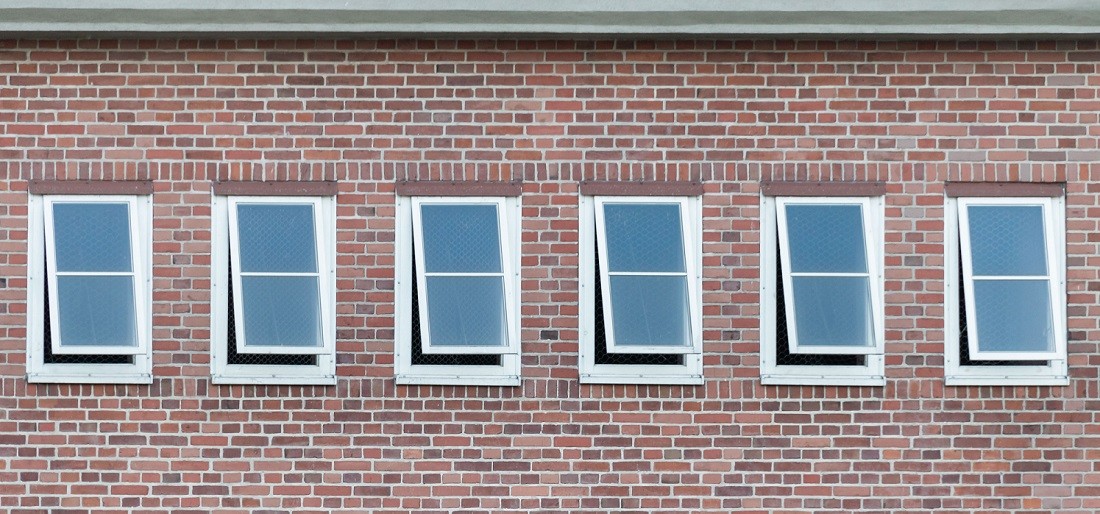Tagged Under:
The Power of Oxygen and Green Spaces Can Boost Student Performance
Boost your students’ focus and performance with some fresh air.
What if you could grant your music students special powers like laser-focused attention, impressive productivity and the ability to make smarter decisions?
You can, and it’s a simple solution: Ensure students get fresh air.
A growing body of research has shown that having enough oxygen in a room can make people feel more energetic, focused and calm. For example, people working in indoor offices where carbon dioxide was being ventilated out did significantly better on cognitive functional tests, and this information can also apply to schools, according to “Better Air = Better Brains,” a research study from Upstate Medical University.
In the research from Upstate, cognitive scores were 61% higher on problem-solving tasks in subjects on the days they spent in indoor spaces that had improved ventilation. At least eight more studies have supported these findings, reports the Irish Times in an article called “A Breath of Stale Air.” The bottom line is that as carbon dioxide levels rise, people become sleepier and do more poorly on tasks.
Open the Window
 Depending on your school setting and policies, the simplest solution is to open a window or door if you possibly can — even for short periods during cold-weather months. (Be sure the window is screened and or secured in a way that it will not create a fall risk for students.)
Depending on your school setting and policies, the simplest solution is to open a window or door if you possibly can — even for short periods during cold-weather months. (Be sure the window is screened and or secured in a way that it will not create a fall risk for students.)
If there’s not much of a breeze, a box fan or fan on a windowsill can help with ventilation, so long as fans are out of reach of small fingers. Researchers with Harvard Medical School suggest positioning the fan so that it is blowing air out of the room, not into the room. Cross-ventilation is another option — if windows can be opened on either side of a room, or a window/door combo. While this may not be realistic during a rousing practice of “Wellington’s Victory,” there may be some quieter opportunities during class to get the door open for a bit.
In the era of COVID, open windows may also make the classroom safer from viral transmission, according to Harvard’s School of Public Health. The National Association for Music Education (NAfME) has recommendations for both indoor and outdoor instruction on optimal air-quality while music-making.
Chemicals May Be Lurking in Your Classroom
 Beyond simple fresh air, consider what else students might be inhaling and strive for a cleaner indoor space.
Beyond simple fresh air, consider what else students might be inhaling and strive for a cleaner indoor space.
- Some dry-erase markers and dry-erase board sprays contain methyl isobutyl ketone, which can be associated with neurological and respiratory problems. There are non-toxic versions of dry-erase markers available (Modern Twist is one option) or at least open the window when using the white board. To clean the board safely, use a solution of 1 teaspoon white vinegar and 1 cup of water.
- Swap chemically scented hand soaps with natural or unscented versions.
- Avoid the use of room freshener sprays. If things have gotten funky in the band room — and not in good, Wild Cherry way — open the window or use a little bit of an essential oil instead of a chemical spritz.
- Steer away from buying dry-clean-only garments, as dry-cleaned clothing can emit volatile organic compounds.
Take Students Outdoors
One of the silver linings of the COVID era has been the increased interest in outdoor classrooms. Marching band practice has traditionally been on a field, of course, but now many music educators are heading outside for other types of instruction.
Schools such as Foust Elementary School in Greensboro, North Carolina, are creating clever designs that benefit both students and instructors. An article on NPR features an outdoor classroom at Foust that has fun details like tree-stump desks and a waterproof chalkboard.
Beyond air quality, being out in the natural world has powerful brain benefits, including boosting working memory, cognitive flexibility and attentional control, according to research (“Understanding Nature and Its Cognitive Benefits”) published in the journal Current Directions in Psychological Science. Outdoor spaces greatly benefit young people with ADHD, too, both from a behavioral and academic perspective.
Green Schoolyards America, a nonprofit dedicated to getting natural environments included in school settings, has an outdoor learning initiative with free resources.
What if you want the benefits of a green space but just can’t get your music students outdoors? Try a micro-break. Even a quick burst of the natural world can boost attention, according to research published in the Journal of Environmental Psychology. Scientists found that simply gazing at a flowering, plant-filled green roof for 40 seconds improved performance on school tasks, compared to looking at a plain, concrete roof surface.
Lastly, some indoor potted plants can help absorb carbon dioxide and boost oxygen. For the classroom, try a rubber plant, peace lily, snake plant or dracaena. But be careful not to overwater plants, which can trigger mold.

















